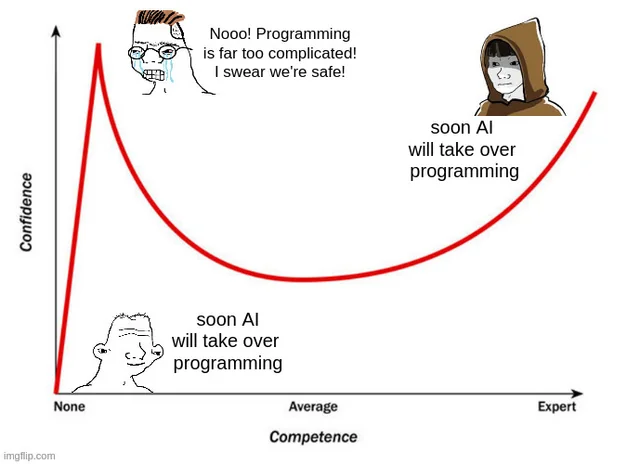Playing To Win
How to Make Your Partnerships Strategic
The Four Rules

A couple of readers have asked me to write on how partnerships fit in with/relate to strategy, so I have decided to make my 7th Year II Playing to Win/Practitioner insights (PTW/PI) on How to Make Your Partnerships Strategic: The Four Rules. You can find all previous PTW/PI here.
Partnerships as a Cool Thing
I am not surprised at the reader questions. Partnerships have become a hot item. With technology driving the convergence of industries — like biotech; media content & digital distribution; financial services & digital self-serve, etc. — and the rise of platform businesses, there is a view that you must have a ‘partnership strategy.’ As is generally the case, everything viewed as cool is seen as ‘strategy.’ Since strategy is cool and partnerships are cool, then what can be cooler than partnership strategy?
Despite their coolness, partnerships aren’t an unalloyed good. I have four rules that I apply to make sure that partnerships and strategy are helpfully aligned.
Rule #1: Don’t Let Partnerships Masquerade as Strategy
As is typically the case with cool things, partnerships can get out of control and masquerade as strategy, as I have previously argued for both planning and OKRs. I recall with chagrin when I agreed to serve on the board of a friend’s new non-profit and my friend immediately commenced a partnership extravaganza — an investment bank partner, a law firm partner, an HR consulting firm partner, and more. He came to the first board meeting brimming with enthusiasm about the awesome partnerships that he had forged. And they were indeed with leading, name-brand firms within their respective industries.
But when I asked how these partnerships enabled our strategy, I pretty much got blank stares. During the board meeting, it became clear to me that the non-profit really didn’t have a coherent strategy and instead of pouring time into thinking about that strategy, my friend focused on creating a slate of partnerships, to feel like forward progress was being made.
That kicked off five years of meandering around without a compelling strategy, during which the partnerships created no discernable value for my friend’s organization. In due course, the non-profit developed a strategy and has enjoyed lots of success — and those original partnerships have been consigned to the ashbin of history, to be replaced by a new set that actually have a positive impact on the new strategy.
Rule #2: Don’t Confuse Vendor with Partner
Many corporations have very big economic relationships with one another. Often because those relationships are so big, they are viewed automatically as partnerships. But for me, bigness does not connote partnership.
An example of this confusion is the 1999–2015 ‘partnership’ between American Express (Amex) and Costco. In 1999, the two companies entered a long-term arrangement by which Amex became the exclusive credit card for Costco. The deal was great for both companies. By the time the deal came up for renewal in 2015, Costco/Amex cards represented 10% of all Amex cards outstanding and Costco earned lots of extra revenue from fees for every new Costco/Amex card that was issued, and a revenue share for Costco/Amex card purchases outside Costco.
But despite this ‘partnership,’ the renewal negotiations reportedly became quite acrimonious. A key driver of the bad vibes was that apparently Costco executives kept referring to Amex as a ‘vendor’ during the negotiations, not a ‘partner’ as Amex wished to be seen. Eventually Amex pulled out of the negotiations entirely and the new exclusive card deal went to Citi/Visa, with financial arrangements that may or may not ever make a profit for Citi.
You are a vendor not a partner when your relationship does not make a meaningful difference to your ‘partner’s’ strategy. Making profit from the financial services portion of your customer relationships is not an unusual thing for retailers. In fact, as a retailer, if you don’t, you are stupid, which means it doesn’t pass the ‘if the opposite is stupid on its face, it isn’t a strategic decision test.’ Given that Costco had a large, prosperous, and growing customer base as of 1999, it literally had a huge array of possible vendors to provide it a white label or co-branded credit card solution to enable its monetization of the financial services aspects of those customer relationships.
In no way did Amex enable, or even make significantly easier, something strategically unique for Costco. Amex was an excellent choice. It used its excellent competitive position in the credit card business to become Costco’s best choice in 1999. But it was a vendor, not a partner — and it would have been less painful for Amex in 2015 if it had recognized that vendor was all Amex ever was to Costco.
Rule #3: A Partner Facilitates Mutually Desirable Strategic Outcomes
For me, a business relationship becomes a partnership when it enables both parties to achieve something that would have been difficult to achieve without each investing in and delivering capabilities that would have great difficulties (if possible at all) in delivering alternatively. A key is that it runs both ways — hence the term partnership.
I think of Nike and Apple having a partnership in Nike+. Nike made shoes and Apple made information technology products/services. Each invested in creating capabilities that enabled a dramatically enhanced user experience for athletic shoe customers. It was no longer just a shoe but rather one that enabled the user to track exercise information, share information and experiences with other users, and more. The offering required the capabilities of both parties. Nike provided the installed base of athletic shoe customers and shoe-making capabilities. Apple provided the brand name for info-tech and the capabilities for building software solutions that enhanced the user experience.
Their joint investments enabled the extension of the Where-to-Play (WTP) and How-to-Win (HTW) of both of their strategies. Each extended their businesses into new WTP domains. And both built on the strength of their brand, strengthening their HTW. It is not a vendor relationship in part because if you were trying to describe it as one, you would be hard-pressed to define who is the vendor and who is the customer.
I consider the relationships between German software giant SAP and the Enterprise Resource Planning (ERP) systems integrators such as Deloitte and Accenture to be partnerships too. SAP wants to sell super-high gross margin software to as many clients as possible. The investments by Deloitte, Accenture and numerous others in building expertise in installing ERP systems has made the software more appealing to clients and has built very important businesses for the systems integrators. The same is being repeated now in cloud services where AWS, Microsoft Azure, and Google Cloud all depend on partnerships with the same systems integrators to take advantage of the possibilities in the cloud services market. The biggest difference with the Nike+ case is that the software companies need multiple partners to penetrate the target market optimally.
In all of these cases, both partners have an expertise area, and each needs the investment of the other in building and maintaining a specific set of capabilities that enable the serving of a desired target market. This contrasts with the Costco-Amex arrangement in which the absence of joint investment in mutual capabilities-building made it a vendor relationship, not a partnership.
Rule #4: Partnerships are More about People than Institutions
I learned this lesson the hard way, and sadly it took multiple times. The first lesson was in the early days of Monitor Company when we were a tiny startup of fewer than 50 consultants. Founding partner and guru Mike Porter had struck up a relationship with Vic Millar of Arthur Andersen & Company (Andersen), who went on to become the father of the systems integration practice at Anderson, which became Andersen Consulting, which became Accenture, the $44 billion behemoth, all of which arose out of a Monitor study on opportunities for Andersen to diversify beyond audit and tax. The work together generated an influential 1985 Porter/Millar Harvard Business Review article entitled How Information Gives you Competitive Advantage (arguably a very prescient article), and a formal partnership between Anderson and Monitor to monetize the ideas in this article. We were giddy. Tiny Monitor would have the thousands of Andersen partners selling our strategy services through this partnership.
Sadly, to my knowledge, we didn’t get a dollar of business out of this ‘partnership.’ The relationship was really between Mike and Vic, not Monitor and Andersen. All those Andersen partners kept doing what they had been doing as if nothing whatsoever had happened. If we wanted the partnership to bear fruit, we had to invest in building consulting products tailored for them to sell and in training the partners one-by-one to be comfortable and confident in selling them. We did no such thing and got nothing out of the ‘partnership.’
I clearly didn’t learn enough because when I was Dean of Rotman, Tata Consultancy Services (TCS), one of India’s largest and most important companies (and part of the Tata & Sons empire), wanted to create a partnership with Rotman because the CEO liked what I was doing at the School. I vividly remember signing the partnership agreement with the then-CEO of TCS in a lovely ceremony in a garden at their campus in Mumbai — and zero ever happened based on the partnership. He liked me and I liked him — but that and $3.99 will buy you a decaf latte at Starbucks.
Unless you build relationships between the key people throughout the operating levels of both organizations, yours will be as valuable as the partnership between Monitor & Andersen, and Rotman & TCS.
Practitioner Insights
Don’t waste your time on the myriad faux partnerships that you can easily create. And don’t think that a big commercial relationship is a partnership when you are nothing more than a vendor. Be a great vendor but think of needing to re-earn your customer’s business every day.
Selectively pursue partnerships that require both you and your partner to invest in capabilities that enable both of you to enhance your WTP/HTW combinations. For Apple, Nike+ facilitated delivering value to new customers. For Nike, it facilitated delivering more value to existing customers. Nike+ enhanced the WTP/HTW for both.
Deloitte (et al) enhanced the customers’ capacity to reap the biggest benefits from installing an SAP ERM and, by doing so, dramatically enhanced SAP’s scale — critical to the success of a software vendor. Deloitte built a huge practice that broadened its ability to positively impact its clients. SAP needed to invest in capabilities for working productively with Deloitte (et al) and Deloitte had to invest in the IP of the practice area. Both enhanced their WTP/HTW through the partnership.
And invest in the people whose actions are necessary for the relationship to come to life. All those Deloitte partners needed to be comfortable selling their clients an SAP ERP system and that kind of thing doesn’t happen by itself. It requires people from both sides of the partnership working with and getting comfortable with one another.
Follow these four rules and your partnerships will be truly strategic.










